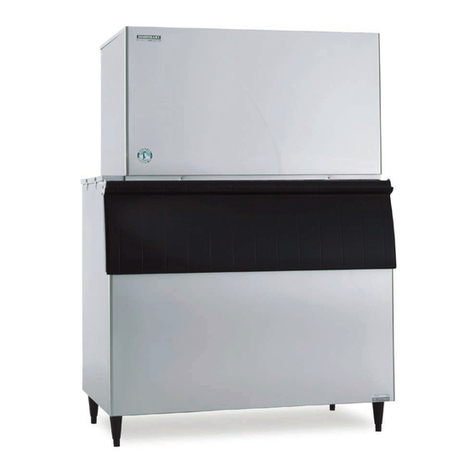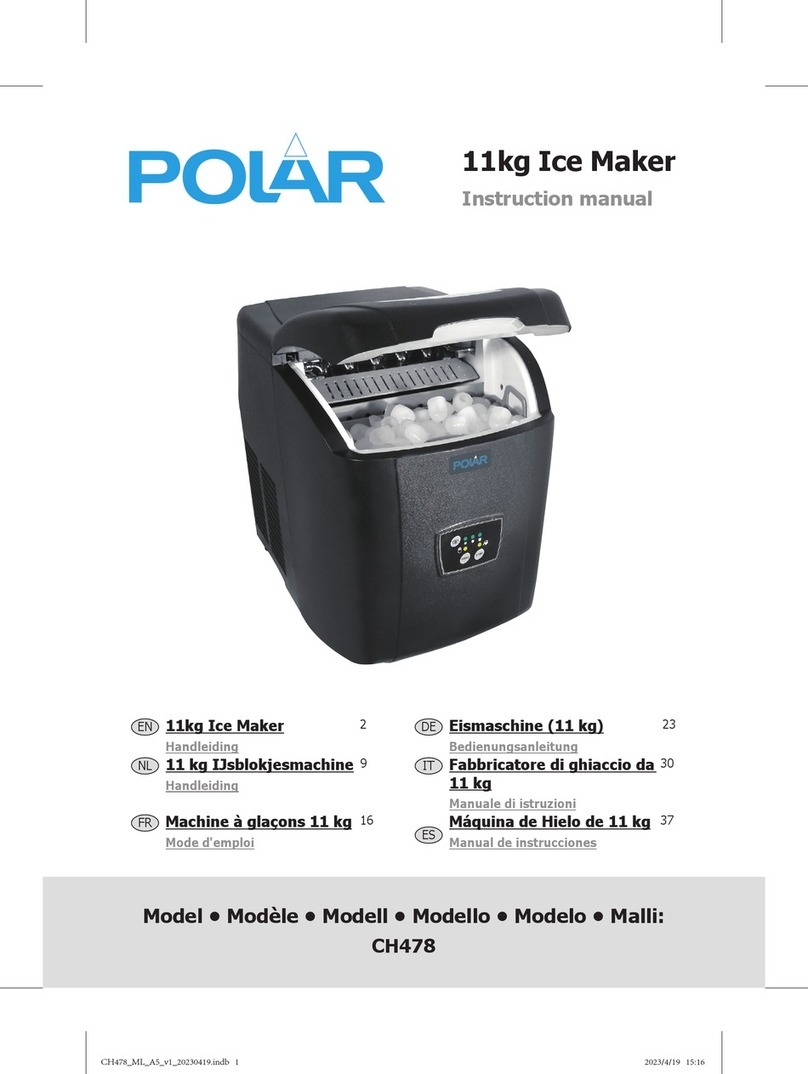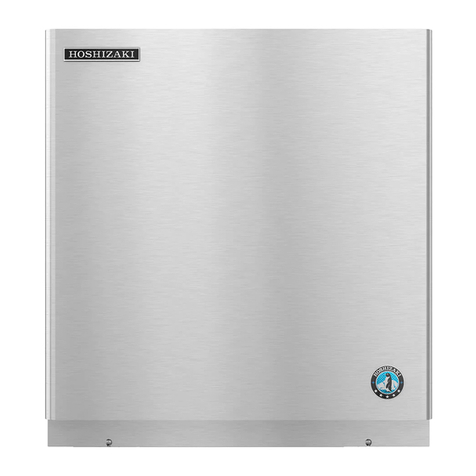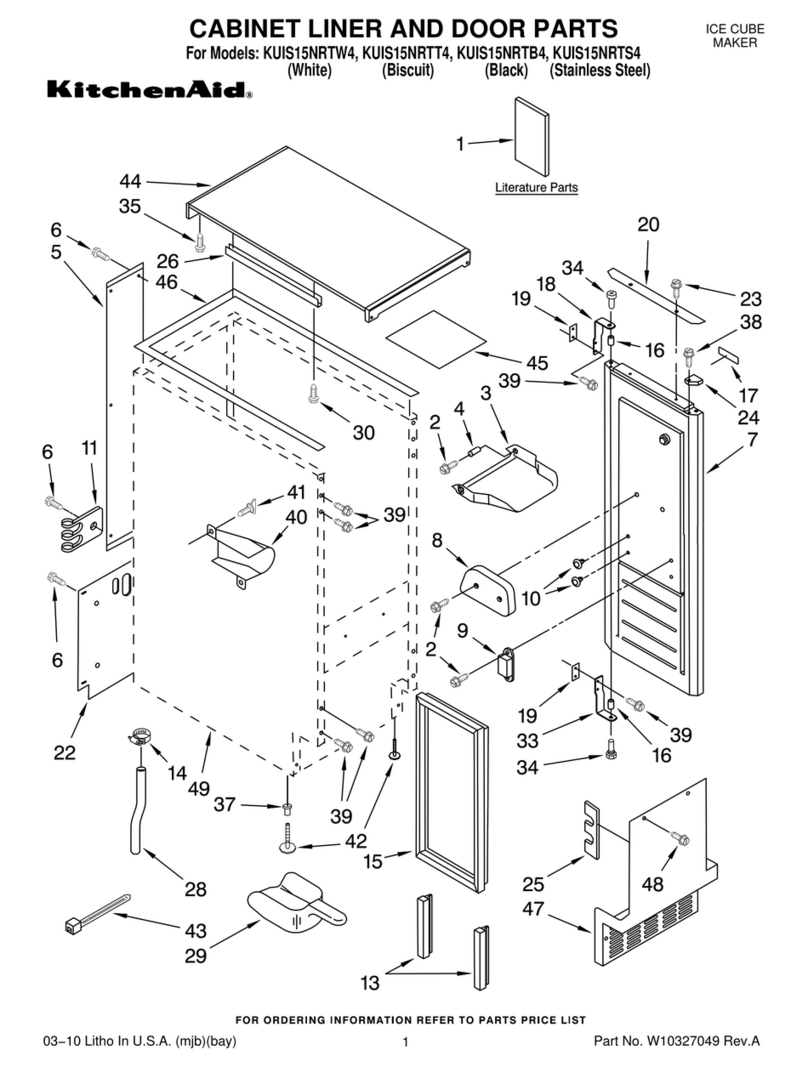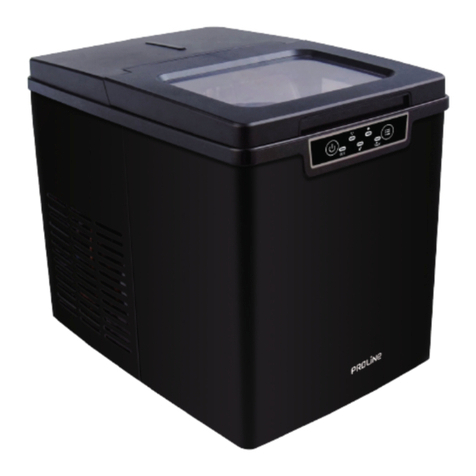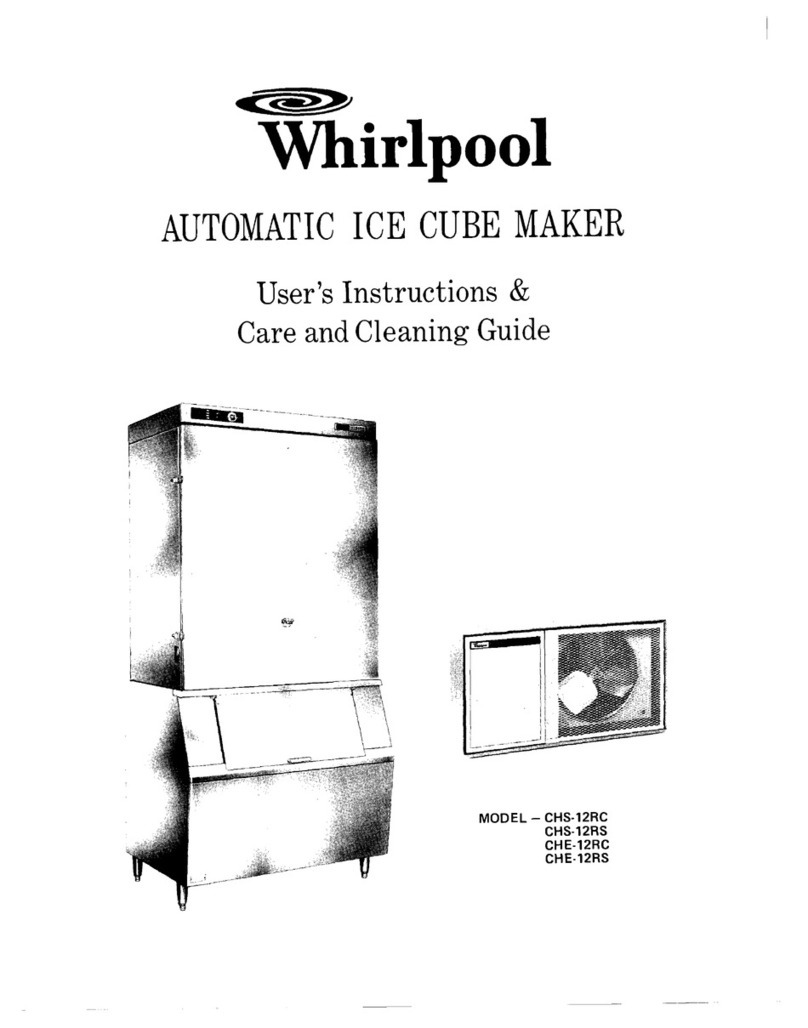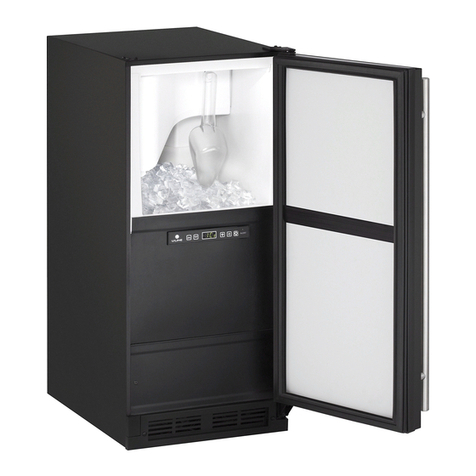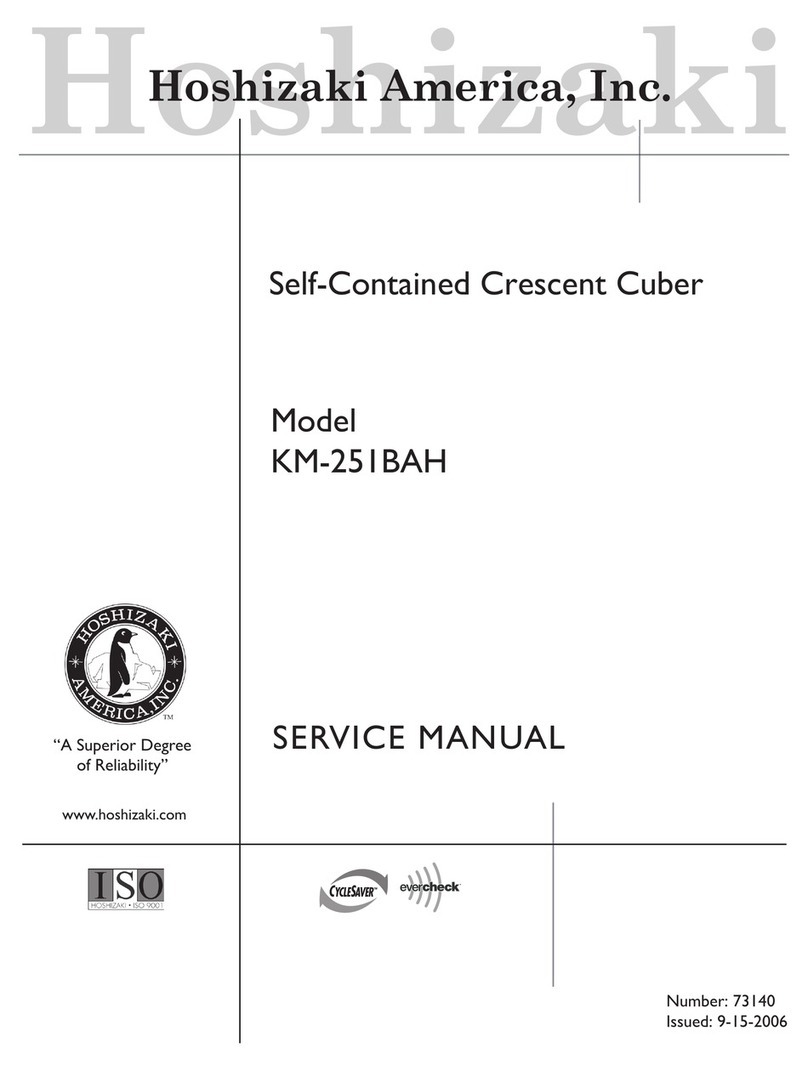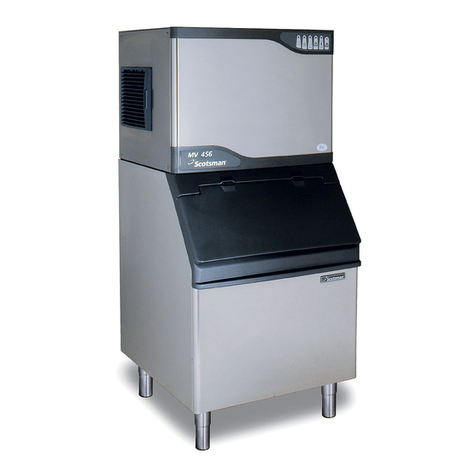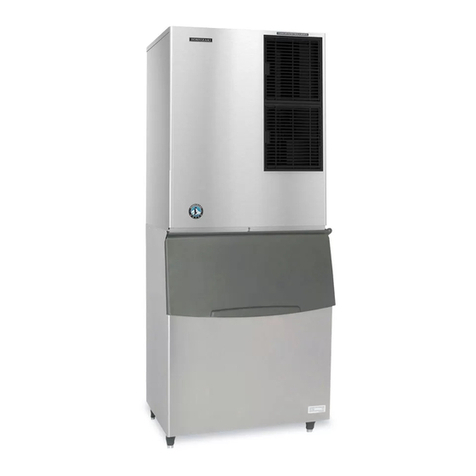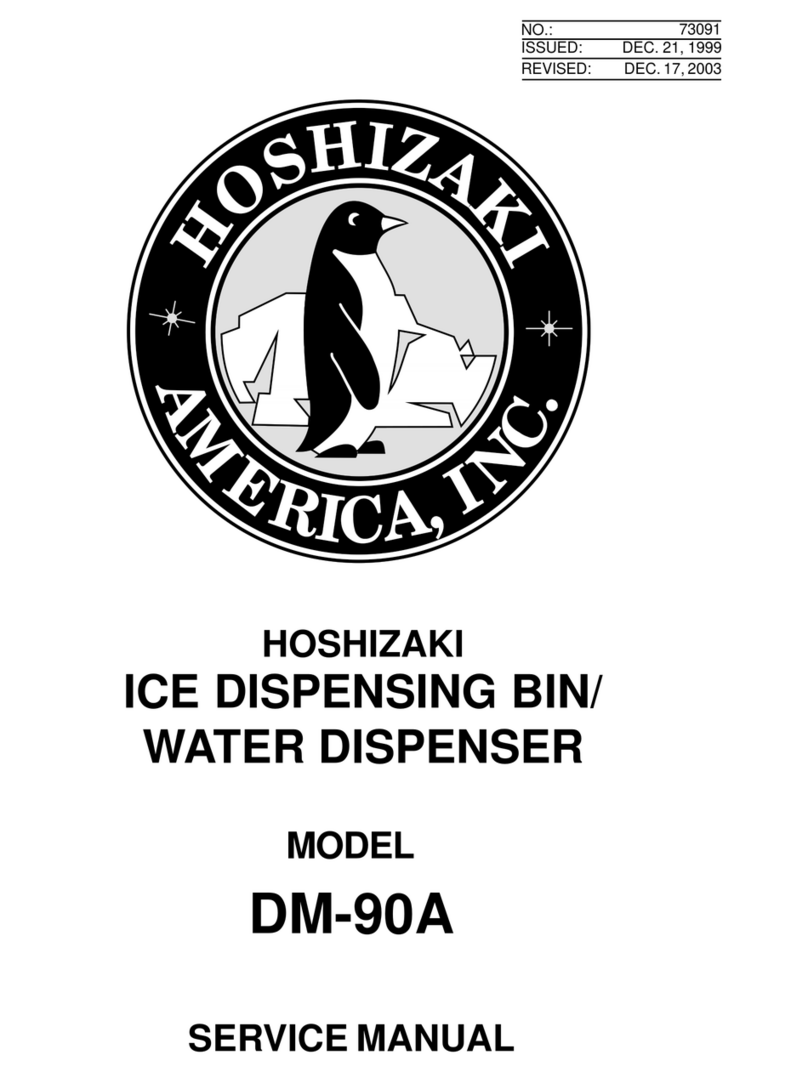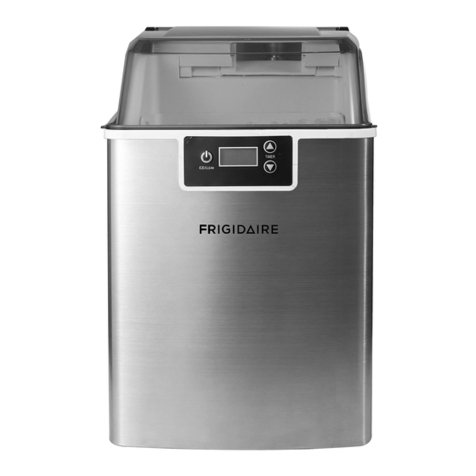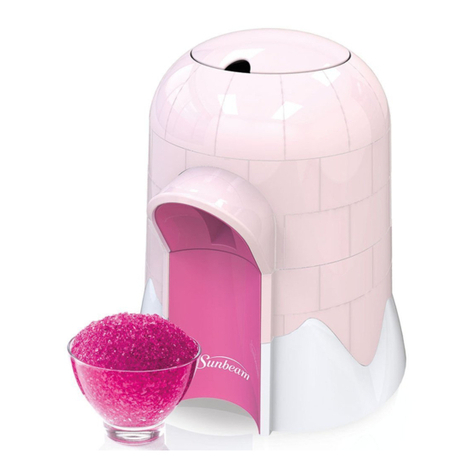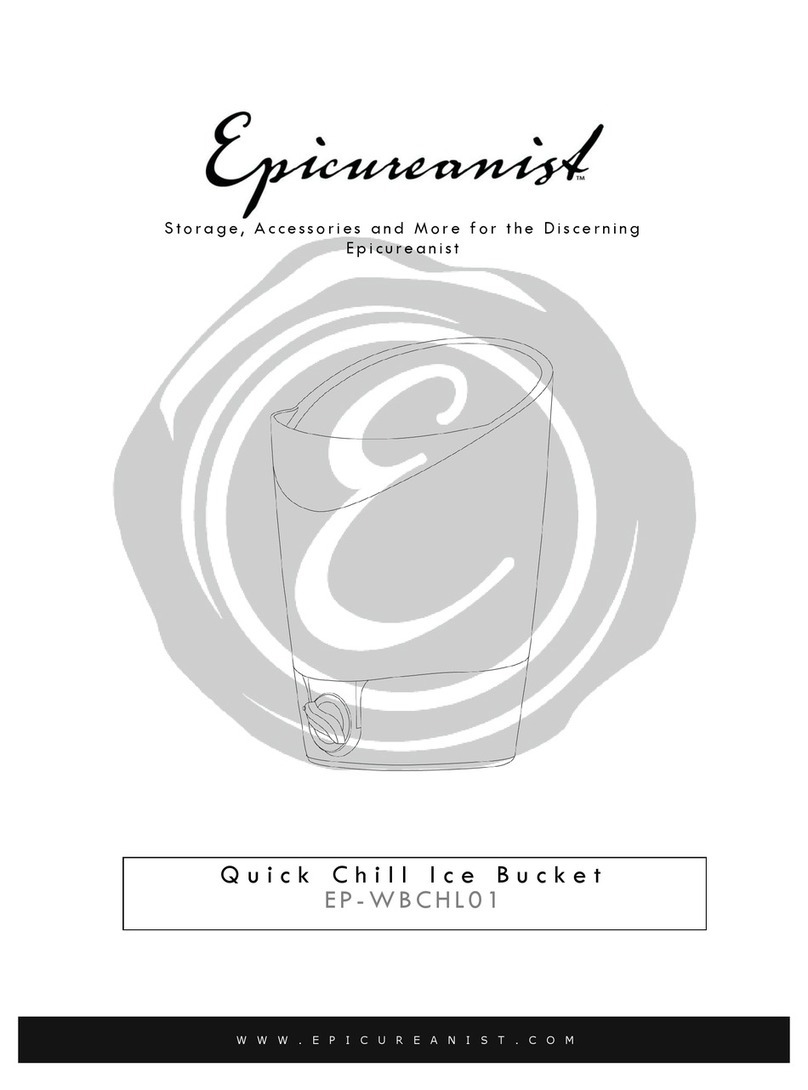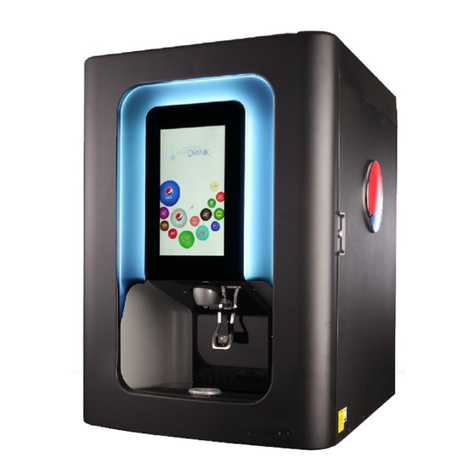
Clean the interior with diluted detergent, warm water and a socloth.
Surfaces in contact with food should be cleaned regularly
to
avoid cross contaminaon from different
types of food, the use of hot clean water with a mild detergent is advisable when dealing with surfaces that
come into contact with food.
Correct food hygiene pracces should always be followed at allmes
to
avoid possibility of food poisoning
/cross contaminaon.
The outside of the appliance should be cleaned regularly with a milddetergent soluon and warm water.
D
ry
the interior and exterior with a socloth.
Never immerse the appliance in water.
Close the drain cap by turning it anclockwise.
When the appliance is
not
in use, remove drain cap
to
drain water completely from the tank.
Clean the ice basket and ice scoopunder running water. Do not use any abrasive cleaner.
TROUBLESHOOTING
Problem Possible Cause Possible Soluon
The indicator light
illuminates.
Water level is
low.
T
urn offthe appliance, fill the tank
with water, and restart.
The indicator light
illuminates.
Ice basket is full. Remove ice from ice basket.
Ice cubes sck together.
Ice making cycle is too long.
T
urn offthe appliance, and restart
when the ice blocks melt. Select the
small ice size.
Water temperature in the
tank is too low.
Change the water in the tank.
Temperature of water recommended
at 8
°
C
to
32
°
C.
Ice making cycle is normal but
no ice formed.
R
oom temperature or water
temperature in the tank is too
high.
The room temperature should be
10
°
C
to
43
°
C and water temperature
should be 8
°
C
to
32
°
C.
Refrigerant in cooling system
leaks.
Consult a qualified technician.
Pipe in the cooling system is
blocked.
Consult a qualified technician.
SPECIFICATIONS
Rangs
:
220 – 240V~ /50Hz
R134a / 62g
We apologise for any inconvenience caused by minor inconsistencies in these instrucons, which may occur
as a result of product improvement and development.
Kesa Electricals © UK: EC1N 6TE 24 / 01 / 2013
4
English
Downloaded from www.vandenborre.be
